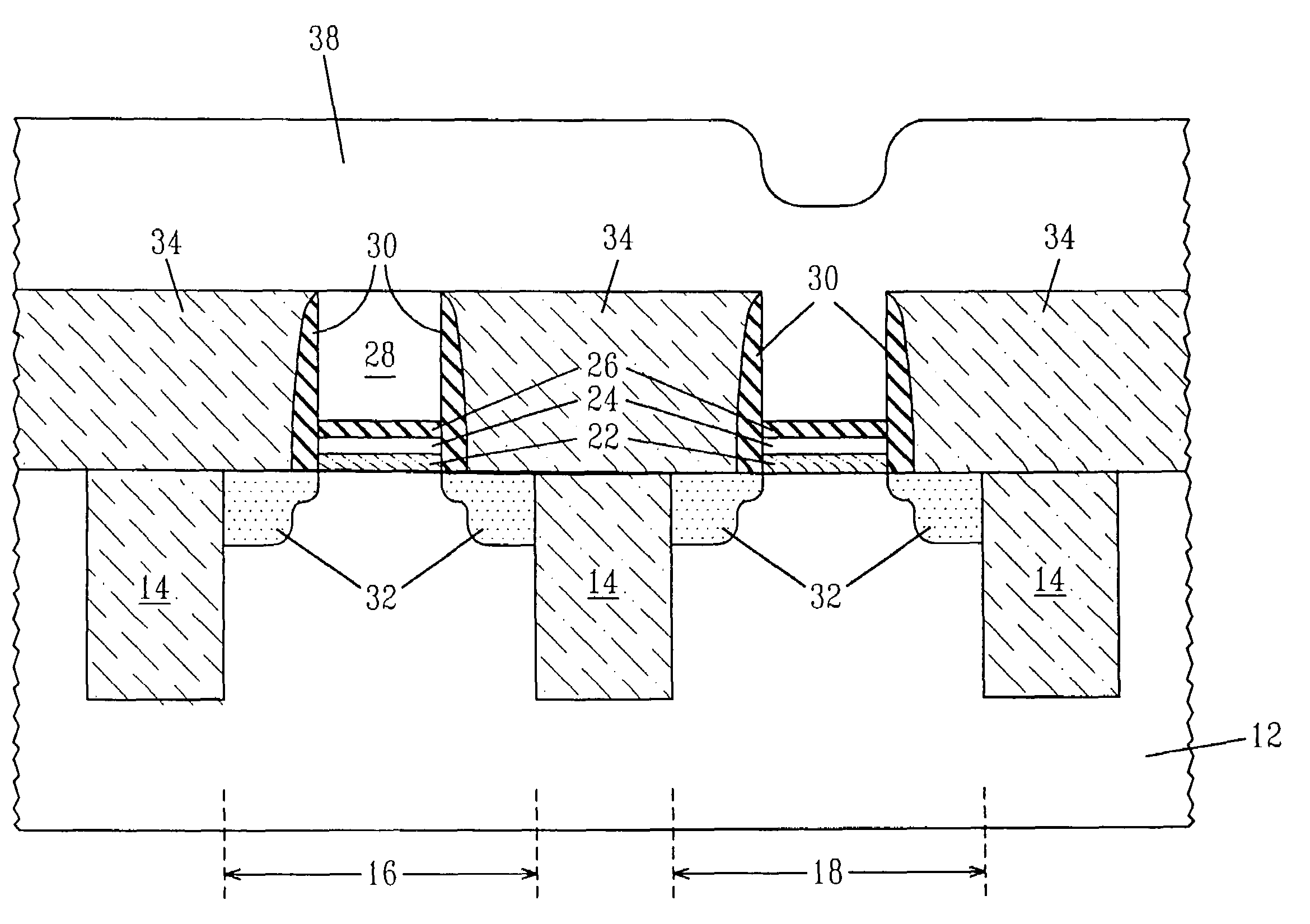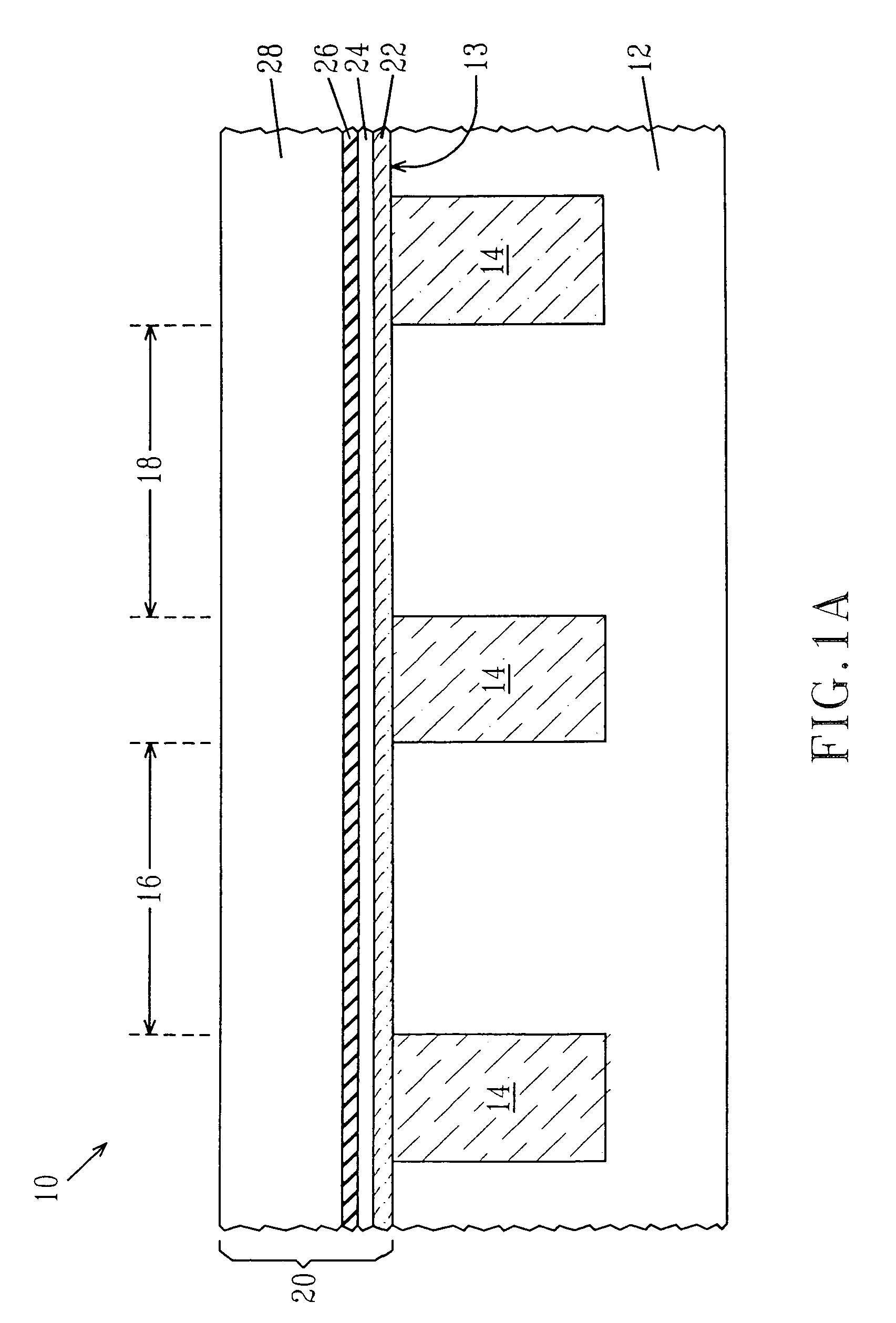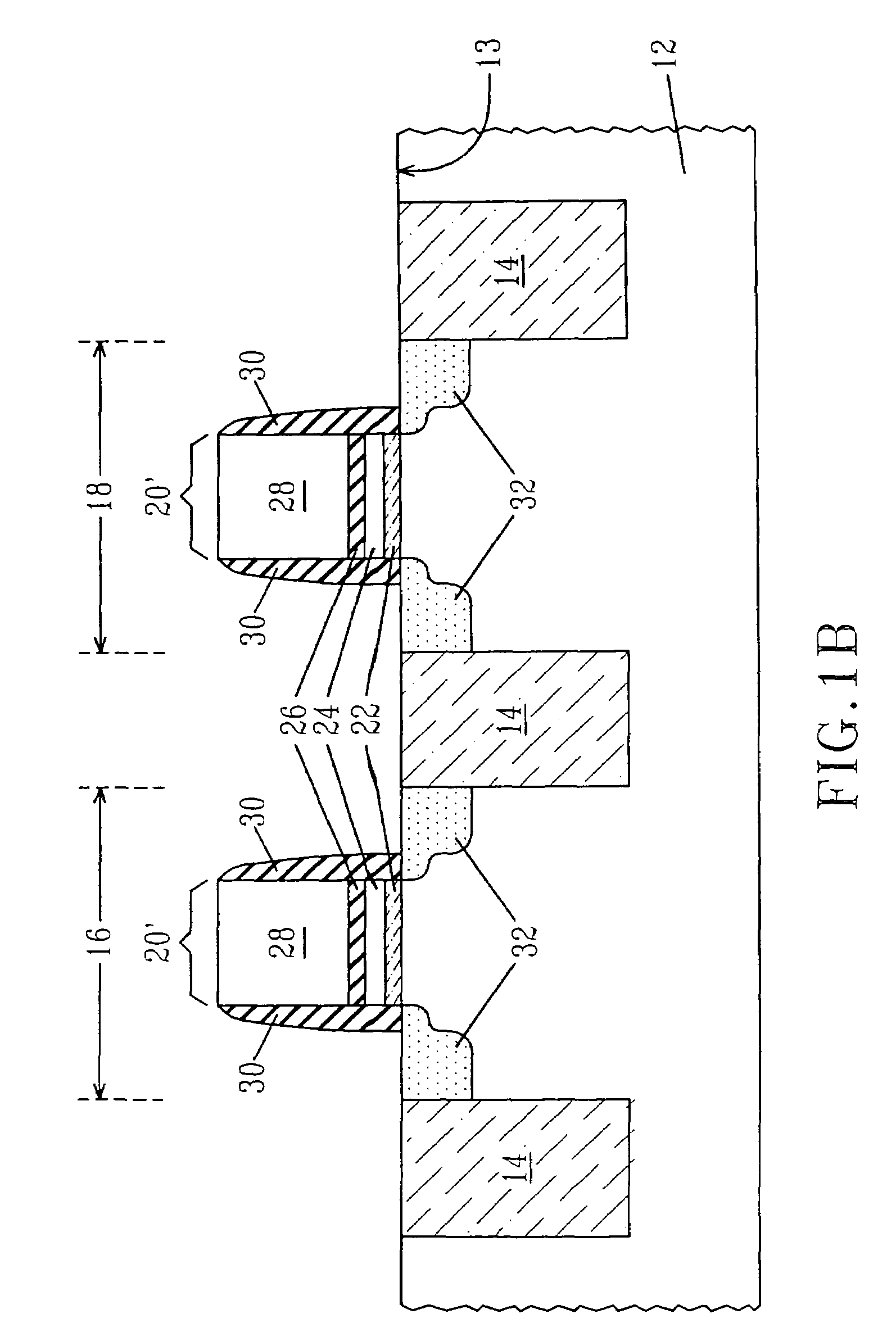Removal of charged defects from metal oxide-gate stacks
a technology of metal oxide gate and defect removal, which is applied in the direction of semiconductor devices, electrical devices, transistors, etc., can solve the problems of problematic use of noble metals such as pt, and achieve the effect of eliminating oxygen vacancies and good carrier mobility
- Summary
- Abstract
- Description
- Claims
- Application Information
AI Technical Summary
Benefits of technology
Problems solved by technology
Method used
Image
Examples
Embodiment Construction
[0025]The present invention, which provides a method of substantially removing charged defects from a material stack including a high k gate dielectric and a metal contact, will now be described in greater detail by referring to the drawings that accompany the present application. It is noted that the drawings of the present application are provided for illustrative purposes and thus they are not drawn to scale.
[0026]Reference is first made to FIGS. 1A-1G which illustrate one of the embodiments of the present invention. It is emphasized that in the drawings of the present application, the semiconductor structure includes both an NFET and a pFET. Although such a structure is shown and described herein below, the present invention also contemplates semiconductor structures that include a pFET, a plurality of pFETs or a combination of a plurality of at least one pFET and at least one NFET. The re-oxidation process described above alters the effective workfunction of the metal contact w...
PUM
 Login to View More
Login to View More Abstract
Description
Claims
Application Information
 Login to View More
Login to View More - R&D
- Intellectual Property
- Life Sciences
- Materials
- Tech Scout
- Unparalleled Data Quality
- Higher Quality Content
- 60% Fewer Hallucinations
Browse by: Latest US Patents, China's latest patents, Technical Efficacy Thesaurus, Application Domain, Technology Topic, Popular Technical Reports.
© 2025 PatSnap. All rights reserved.Legal|Privacy policy|Modern Slavery Act Transparency Statement|Sitemap|About US| Contact US: help@patsnap.com



